Which salt do you use in your kitchen, Tamara? (Hint: Pink Himalayan salt is among the highest Lead content salts!)
This is an ad-free article.
We have removed advertisements from this article to make it easier for you to read. If you would like to support our independent consumer goods testing (and reporting) by contributing (which will help us keep our more widely-read articles ad-free), click here. Thank you!
Additional Reading for Those Interested in This Topic
- The Myth of “Beneficial Minerals” in Dirty Salt
- The Lead Safe Mama Salt Overview
- XRF Testing of a Typical Salt Lamp
- Our Original (2013) Article on Lead in Chocolate
- An Overview of the Concern for Lead in Baby Food
- Safer Choices for Food (from a Lead Perspective)
- An article about the cumulative impact of multiple (minor) sources of Lead on humans
- A link to the documentary feature film we directed and produced
For those new to the Lead Safe Mama website:
Tamara Rubin is a multiple-federal-award-winning independent advocate for childhood Lead poisoning prevention and consumer goods safety, and a documentary filmmaker. She is also a mother of Lead-poisoned children (two of her sons were acutely Lead-poisoned in 2005).
- Tamara owns and runs Lead Safe Mama, LLC — a community collaborative woman-owned small business for childhood Lead poisoning prevention and consumer goods safety.
- Since 2009, Tamara has been using XRF technology (a scientific testing method) using the exact instrumentation employed by the U.S. Consumer Product Safety Commission to test consumer goods for toxicants (specifically heavy metals — including Lead, Cadmium, Mercury, Antimony, and Arsenic).
- Since July of 2022, the work of Lead Safe Mama, LLC has been responsible for five product recalls (FDA and CPSC).
- All test results reported on this website are science-based, accurate, and replicable.
- Items that Lead Safe Mama, LLC reports on are tested multiple times to confirm the results published (for each component tested).
- Tamara’s work was featured in Consumer Reports Magazine in February 2023 (March 2023 print edition) and The Guardian in November 2023.
Published: December 20, 2019
Updated: December 2023
Readers ask me all the time what kind of salt I like to use when cooking for my family…
Salt consumption and selection is a very personal decision — with microplastics, Lead, and other toxicants to consider. Here are my considerations all laid out:
- For my family, we use very little salt (in general) — adding it to our cooking sparingly (or not at all), so that’s our most important consideration (personally).
- Since we do use so little salt, we don’t mind paying more for a high-quality/ cleaner salt.
- However, even though we use very little salt, I would never use any pink Himalayan salt for my family because it is so high in Lead. Usually, pink Himalayan salt tests positive for the highest (or among the highest) Lead levels of all salts, depending on which charts you look at and which brands (or types of salt) are tested for comparison.
- Pink Himalayan Salt also has other “naturally-occurring” — but highly undesirable — elements (elements frequently found in the subterranean salt mines where this type of salt is collected). These undesirable elements can include trace levels of everything from Cadmium and Arsenic to Uranium and other radioactive elements.
- From an environmental-impact perspective (globally), it is also important to look at how your salt is produced and how far it has to travel to get to your table.
- Choosing salt evaporated from seawater, and buying it locally — as we do (given Jacobsen Salt Co. is local to us in Oregon and we have even been out to see their “factory” in person) — is significantly more sustainable than the land-based mining of salt.
- Salt mining requires large expenditures of energy, and produces significant environmental contamination (including water, air, and soil pollution, impacting the lives of families who live in the areas of these mines).
- In addition to the routine use of explosives and other hazardous mining practices (including the use of Lead-painted/ Lead-contaminated harvesting and transportation equipment/ machinery/ vehicles), this method (mining) for harvesting salt also results in the mutilation of the lands where these mines are located.
- With all of these (and other) environmental considerations in mind, our family always chooses small-batch-harvested, local sea salt (or salt from coastal areas known for lower levels of contaminants) if at all possible.
- We love any of the locally harvested natural sea salt products made by Jacobsen’s® from Oregon (here’s the Lead Safe Mama, LLC Amazon affiliate link for one of their products that I love), but I also love Icelandic sea salt (my son brought me some home as a gift from a trip he took to Iceland and I was hooked!).
- Both of these options are fairly expensive (as far as salt goes) but also very tasty! If you don’t think of salt as “tasty,” you have to at least try one of these options once — the flavor is full and very distinct from your mom or grandma’s trusty ol’ Morton’s®* salt!
- If we are broke (and run out of salt and cannot afford Jacobsen’s, but need to buy salt), we sometimes buy minimally processed, natural sea salt of European origin (French, Spanish or otherwise) sold in the tall skinny tubes at Whole Foods and Trader Joe’s. But really, I just try to use less salt, and always just keep some Jacobsen’s around!
- We also have been known to buy sea salt in bulk at our local organic food co-op, People’s here in Portland!
- For economy, I do buy Morton’s — for making homemade Play-Doh!
Another salt I avoid…
In addition to avoiding pink Himalayan salt, I would also never buy any Redmond Real Salt® (or any of Redmond Life’s products) because not only do their salt products have higher Lead levels than any salt I would ever be comfortable feeding to my family (testing we have seen has shown Lead in the range of 167 to 250 ppb for Redmond salt), but in my opinion, the company has consistently behaved unethically concerning the Lead content of many of their products (not just salt) over the course of the past decade (specifically as evidenced by their deceptive marking and product design with their Lead-contaminated toothpaste products).
Wait, what? Why exactly do you avoid Redmond Life-brand products?
This consideration is not based only on the quality (and Lead-levels) of Redmond’s salt, but is primarily based on ethical/political considerations based on the company’s questionable (unethical) track record as a whole (when it comes to toxicants in their products).
The company that own’s Real Salt® also owns the Earthpaste® product line, which is a product that Lead Safe Mama, LLC (and the company’s own internal testing) confirmed to have high levels of Lead in the primary ingredient (Redmond’s Bentonite Clay), yet which Redmond’s continues to market to PARENTS — for use by CHILDREN — with their Lemon-flavored toothpaste product (which used to be named “Silly Lemon,” but which they changed to “Lemon Twist” to avoid liability concerns* as they were previously more-obviously marketing this Lead-contaminated product for use by children).
*While their Lemon-flavored toothpaste packaging now either implies or states that it “should not be used by children” (as it has unsafe levels of Lead!), the package still has a smiling lemon on it! You can read more about Earthpaste here, and you can see what I would argue is the deceptive packaging for their “Silly Lemon” product here (along with my proposed alterations to their packaging)! Note: they apparently recently changed the packaging to say “Lemon Twist,” but still with a smiling lemon it is obviously marketed for parents to think it is safe for children to use, in spite of the warning added on the back of the package that it “may not be appropriate for consumption by children and pregnant women.” You can see this new lemon packaging here.
2023: Lemon Monster Image (above)
Image (above) with language overtly saying it is okay for your child to eat this toothpaste product.
CYA Language (image above/ product description) stating that the product is for use by adults.
But I digress…
Back to the salt conversation….
Here’s a Lead Safe Mama, LLC Amazon affiliate link for Jacobsen’s salt. Independent testing of Jacobsen’s sea salt products have consistently shown the sea salt products from this brand to test below 30 ppb (parts per billion) Lead.
Thank you for reading and sharing posts and articles from the Lead Safe Mama, LLC website! As always, please let me know if you have any questions. I will do my best to answer them personally as soon as I have a moment.
Tamara Elise Rubin
Owner — Lead Safe Mama, LLC
Amazon links are affiliate links. If you purchase something after clicking on one of Lead Safe Mama, LLC’s affiliate links, we may receive a small percentage of what you spend at no extra cost to you.
Never Miss an Important Article Again!
Join our Email List








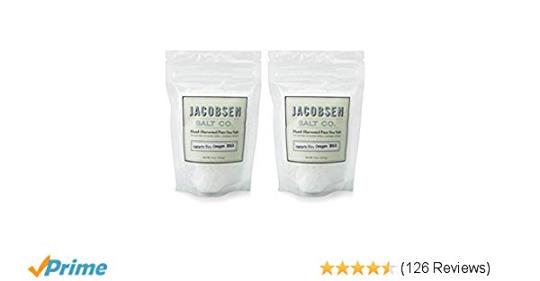
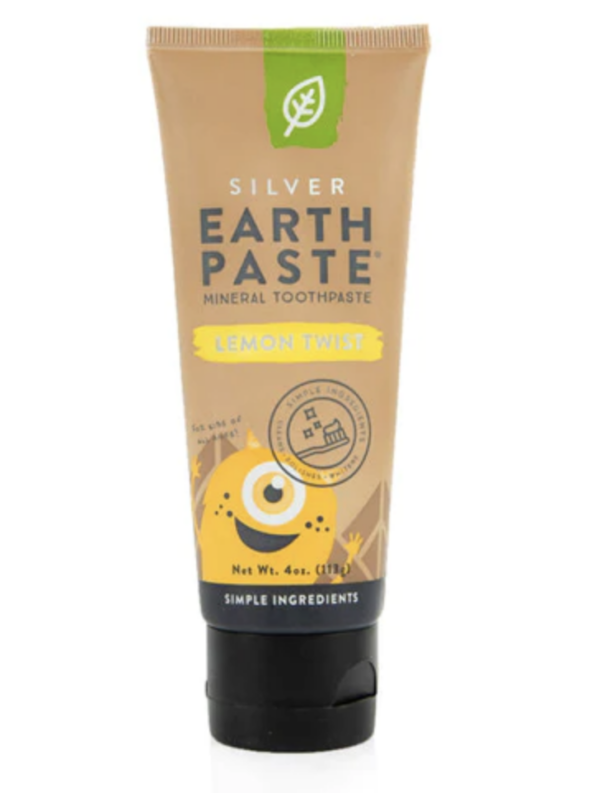
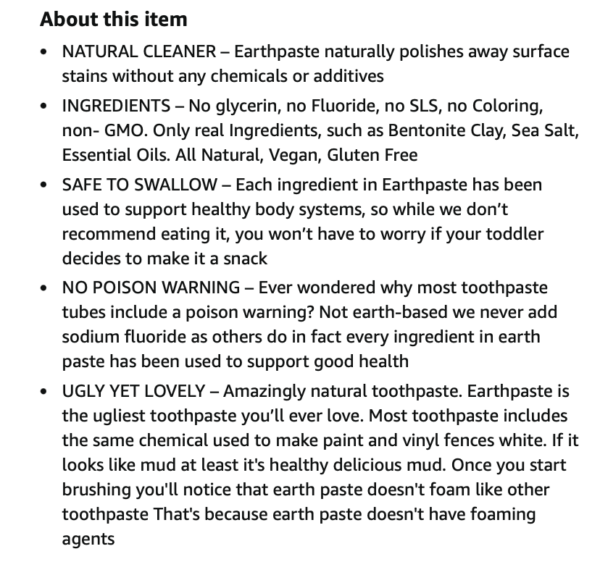
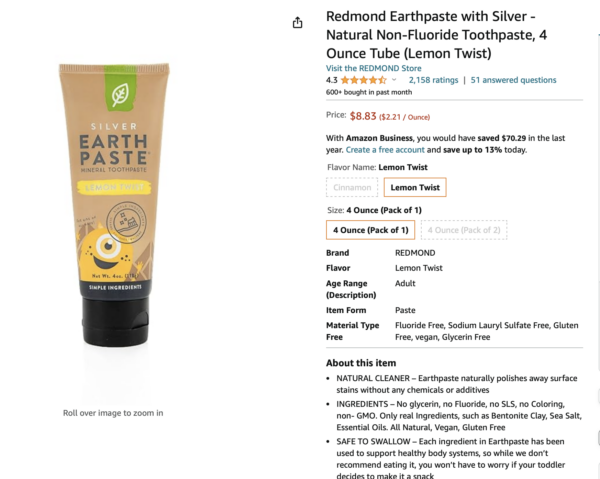
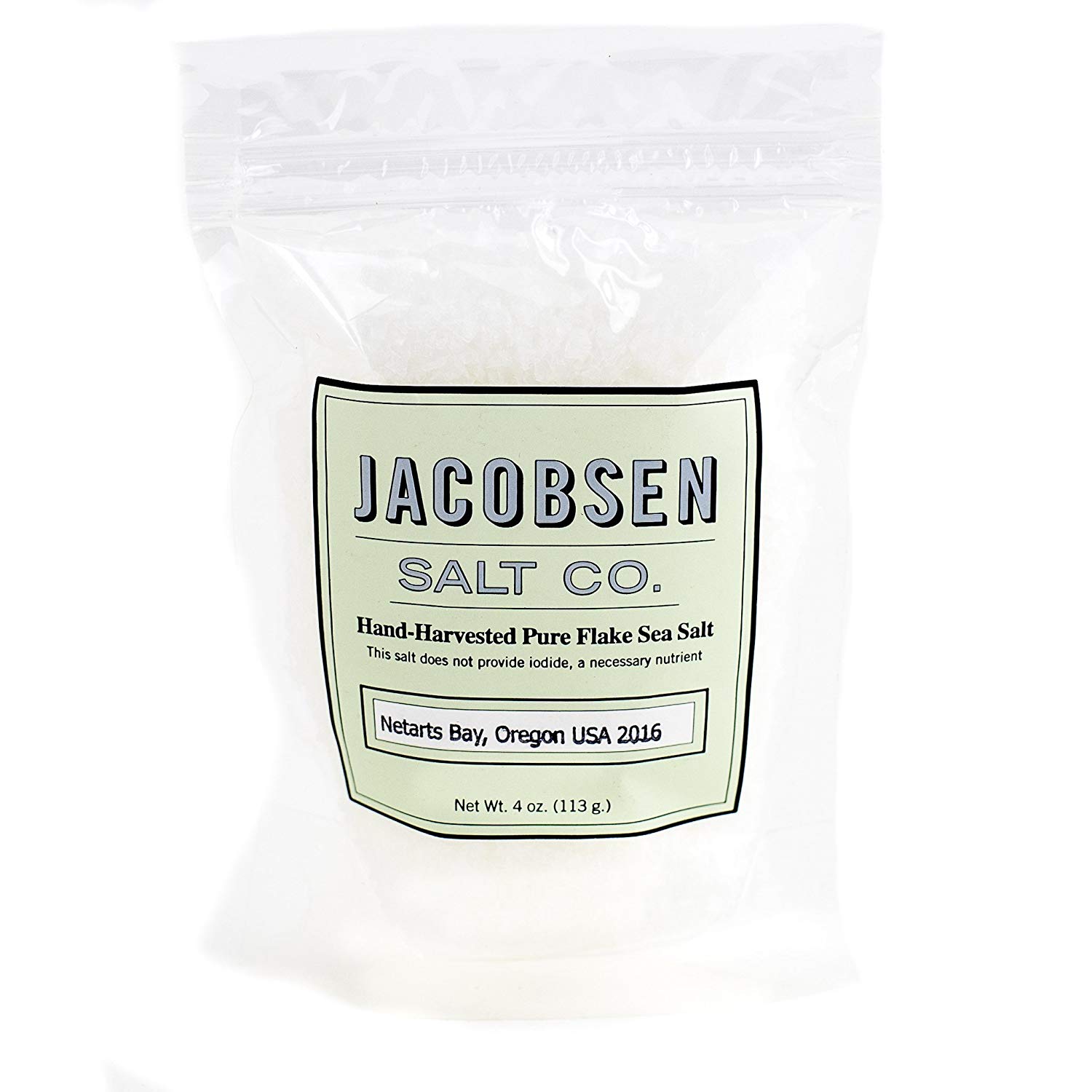

Could you clarify in regards to the salt which you’re referring to from WF/TJs? Is it a specific type or do you suggest that any European sea salt is a good choice? Thanks!
What brand of Icelandic salt do you use?
What about Maldon?
Hello! Thank you for commenting! This is AJ (one of Tamara’s sons). I’m helping my mom answer questions.
Check out this article for more salt brand recommendations (including Maldon) and a deeper dive on this subject:
https://tamararubin.com/2020/10/how-much-lead-is-in-salt-which-salt-is-safest-to-use-for-cooking-is-himalayan-salt-safe/
You can also subscribe to the free mailing list by clicking the blue “subscribe” button at the top of this article to stay updated on any new information in real time.
Hi AJ
Since your mom recommends Jacobsens, is it all their salt products that are safe or just the flaky sea salt?
Just the Oregon sea salt (flaky or kosher):
https://tamararubin.com/2024/07/june-2024-laboratory-test-results-for-jacobsen-salt-co-pure-kosher-oregon-sea-salt/
The Italian has lead:
https://tamararubin.com/2024/09/jacobsen-salt-companys-pure-italian-fine-sea-salt-from-trapani-italy-tests-positive-for-lead-september-2024-lab-report/
I’m confused… does this mean sea salt doesn’t have lead but mined salts might?
I think – as a rule – mined salts tend to have much higher Lead levels than sea salts.
Thanks for commenting.
Tamara
Anyone concerned with the microplastics being found in sea salts?
I was going to ask the same thing. Whenever we walk Oregon coast beaches, you can see huge amounts of ground up plastic particles being brought in by the tide and washed back into the ocean. So sad, and alarming for seafood and salt that’s harvested in these coastal waters. Would greatly appreciate Tamara’s take on the potential hormone disrupting microplastics in the sea salt she’s recommending. Thank you for all you do!
Jacobsen screens for microplastics. If you have questions about that I would definitely call the company directly.
T
The 2 salts I was using were low in microplastics but high in lead. The reviews on amazon for Jacobsens salt aren’t too good, is there another brand you would recommend? The icelandic salt you mentioned can you share the brand?
Your remark is interesting. I have lived on the Oregon coast in Florence for the past 6 1/2 years and often walk on the beaches here. I can honestly report that I have only seen a piece of plastic on the sand and nothing on the tidal shore on two occasions. I wonder which Oregon beaches you walk on. I’m not saying there isn’t a high microplastics problem, but I’m just very curious where you walk. Because where I live, thankfully so far, there is little evidence of that looming problem.
In Hawaii the plastic is everywhere! It’s mixed in with the sand in brightly colored tiny specs – and that’s just what we can see. It is so sad.
I am! Very much so! And sea salt would have the highest concentration while mined salt should not have any.
I don’t use sea salt because of contamination from the oil, heavy metals, nuclear waste, industrial waste, human waste, decommissioned ships, fertilizers, pesticides, pharmaceuticals, plastics, and God knows what else that we’ve been dumping into the oceans for a hundred years. Every time I say this, invariably the answer is “Oh, the ocean is so huge, it’s all diluted and there’s not enough to affect you.” That’s what we used to say about our climate and biosphere. I haven’t seen data, but until someone convinces me otherwise I’ll continue buying plain white salt. It’s mined from salt deposits that are millions of years old, hence pristine.
Thank you for commenting Chris!
Tamara
Tamara, can you share the studies or sources about Himalayan salt being the highest in lead? I try avoiding sea salt mainly because when we talk about hymalayan salt being the highest in lead, then the other choices are not better in any way. Sea salt is not only high in radiation, mercury, plastic byproducts, pharmaceuticals, variety if different heavy metals, human waste etc.
I will be updating the post shortly with some links to relevant studies.
Sea salt is often coming in at 25 to 35 ppb Lead and the Himalayan salt can be in the thousands sometimes.
Tamara
I still don’t see supporting documentation regarding allegations of high lead levels. You shouldn’t post warnings or defaming statements without substantiation. It’s fearmongering at best and defamation at worst.
It sounds like you may not have read the overview article. Here’s that link:
https://tamararubin.com/2020/10/how-much-lead-is-in-salt-which-salt-is-safest-to-use-for-cooking-is-himalayan-salt-safe/
This article also has lots of supporting (scientific) links:
https://tamararubin.com/2023/12/the-myth-of-beneficial-trace-minerals-found-in-mined-i-e-himalayan-or-gray-unprocessed-i-e-celtic-salts-spoilers-its-all-greenwashing/
Thank you for commenting.
Tamara
Hello I was talking to someone about your article on salt. Can you state your sources please for the lead? They would like to look at the sources please,
Thank you!
Wendy
Hi Wendy,
Are you on Facebook? If you join my group “The Lead (Pb) Group” one of the women in the group is a researcher in the medical profession and she put together a summary of all of the different salts and their Lead levels and there are several links to studies there. I will be updating this post shortly as well and will give you a holler when I have done that.
Tamara
Hi Tamara,
I’m looking around in The Lead (Pb) Group on facebook but couldn’t find the summary of all the different salts and their lead levels. Could you please cite the link?
Thank you
Hi there!
I believe it is in the documents for the group. Let men now if you cannot find it there.
Tamara
Hi Tamara, I saw you use the mortons to make homemade play dough. Would you trust using it even if you have a child who is 2 years old and at times, eats the play dough?
What is your opinion on Green Toys play dough, since they use salt in there dough?
I don’t have concerns for accidental ingestion of salt in something like that. From an environmental perspective it is hard to support the sale of packaged play-doh given it is so easy and cheap (and so much fun!) to make. I only buy play doh every now and then so I have packaging to put my homemade stuff in.
Tamara
Hi, do you know anything about Celtic sea salt? That has been my brand of choice for a few years; I’m wondering how it stacks up against the others you mentioned.
https://www.bulletproof.com/diet/superfoods/is-pink-himalayan-salt-toxic/
I found the above article interesting, in contrast to your article. I, too, can get swept away and feel like toxins are over bearing our lives, and get overwhelmed in the matter (also a form of toxicity since I’m stressing out) but I’m happy to have people like the one that wrote the above article to bring me back to a better balance of looking at things like this topic. I just discovered your work today, & it’s important, & all good, but when I found this salt article. I got lost a little bit. We would die with our salt, & refined salt, or table salt, is way more toxic then sea salts. “Salt Your Way to Health” by Dr Brownstein, or his YouTube videos on the subject are worth while.
Hi Francine –
Which is why I recommend sea salts 🙂 [From the most pristine waters or the most reputable companies possible.]
Tamara
Dave Asprey shuns grains, but this Bulletproof article that lists Dave as an author promotes them??
“Fiber-rich foods, such as fruits, vegetables, and whole grains, support gut health and help the body eliminate toxins.”
Hi Tamara,
Unfortunately I do not have a Facebook account and cannot access the study documents. Where else could I access the studies?
Thanks!
Hi Tamara,
Do you have any recommendations for any salt in Canada? Jacobsen is not easily available and shipping is just ridiculous.
Thanks.
Ruchi
Hi Tamara, can you please tell me if diamond crystal kosher salt is OK?
I second this question. How does Diamond Crystal kosher salt test out?
Interesting article, Tamara! Have you tested Redmond’s Salt for lead?
Have you tested Redmond’s Salt or found peer reviewed studies that identify lead content in Redmond’s Salt? It is hugely popular in the Carnivore lifestyle and carries the backing of a well-known Carnivore movement author.
Hello! Where can I find the recommendations for the European salt you mentioned you would update it with? Thanks!
Do you not worry about radioactive contamination from Fukushima since we saw all kinds of radioactive trash arrive at the US West Coast after the tsunami?
What about micro plastics in sea salt? Saw that at least one sea salt company was filtering these micro plastics.
Here in Quebec (in Canada), the two salts that I have found in healthy food stores are sea salt Le Paludier, and the pink Hymalayan salt Lumière de Sel. I have seen on your website that the sea salt Le Paludier is one to avoid. But I have found no information on the Himalayan salt Lumière de Sel. The company is Ecoideas. I just wrote to them to ask them the amount of lead in their salt. I don’t know yet if they will answer me. I have not seen their product on your website. Maybe you do have information on that salt even if you did not mention it? Thank you for any information you have. If they answer me, I will share with you what they answer me.
The pink color is because of higher inorganic iron content.
Have you ever tested Windsor salt?
In Canada, it is a very common brand.
I use both the regular salt (sodium chloride), the half-salt (half potassium, half sodium), and the no-salt ( all potassium).
The reason for the potassium salt use is for our blood pressure.
In your opinion, would potassium salts be equally likely to have lead as sodium salts?
Would you also trust the other non Himalayan salts from Jacobsen salt co? I am interested in the infused salts and the spice mixes in particular. Thank you so much for your research!
I recently did a heavy metals provocation urine test and it showed elevated levels of lead, aluminum and a few others. I contacted Jacobson because we use their salt and asked them about the custom made pots they use in processing. They are made from stainless steel with an aluminum coating. They said the testing showed “ Aluminum – 1,960 ppb to a LOQ of 400ppb”.
Is this acceptable?
Thank you,
Kim
Aluminum might not be a heavy metal but it is toxic so this seems important. Thank you
My functional health practitioner recommended me to eat 1 tsp of Celtic salt per day. I’m wondering if you have tested that brand.
Hi, I’m also interested in wether Celtic Sea salt is a good choice or not? I see a few people have also enquired. Where I live, I can’t find it in stores anymore that I normally see them. Signs are still on the shelves… but it’s been months and no stock ever. Is there an issue with this salt do you think?<<Thank you in advance
Does anyone know of any recent analysis of the Costco Kirkland salt currently sourced from Australia?
Welp, was gonna buy the sea salt but now people are freaking me out about all kinds of contaminants in there. I’m so confused
This is a good brand (any of their sea salt products): https://tamararubin.com/2019/12/asktamara-what-kind-of-salt-do-you-use-in-your-kitchen/
Are you confident in all the salts from Jacobsen? Their Italian and other Oregon Kosher sea salts are much more affordable for example. Thanks!
I am confident about the testing done on their Oregon sea salts.
T
Is Jacobsen salt from the Pacific Ocean? That ocean is contaminated with Fukushima radiation
Hi, I’m wondering if you’ve done testing on Baja gold mineral salt and what you think of Crucial four Icelandic flake salt. Thanks so much for your work! I’m trying to find the best salt to use on a day to day basis, as I grew up using Himalayan pink salt… I wonder about the Jacobson salt being sea salt and the plastics and such that can accumulate in those, though I’m now leaning in that direction with the information I’ve been seeing about lead and heavy metals.
This makes me so sad. I have POTs, so I eat a lot of salt every day. Have been using Himalayan salt for last five years through three pregnancies.
I wonder about Baja Gold Salt? Also Trace Minerals brand?
Have you ever heard of Mayi Tuz salt? I recently found it and want to try it…. They have testing results on their website, but I can’t read them because they are in a other language.
https://mayituz.com/en/pages/our-documents
1. Is this the icelandic salt you use occasionally?
Saltverk Flaky Sea Salt – 3.17 Ounce Jar – Hand Harvested Gourmet – Sustainably Made
and
2. the affiliate link is dead
Do you recommend any kosher salt ?
according to this, himalayan pink salt was relatively low in lead, among a set including Maldon sea salt. (the authors do say all of them were high ) : https://www.researchgate.net/publication/373155419_Gourmet_Table_Salts_The_Mineral_Composition_Showdown
The pink color is because of the iron in the salt.
https://www.jqdsalt.com/
J.Q. Dickinson Salt-Works is local to me. What do you think about their quality?
Do you test for aluminum, iron and copper in your salt?
Also, which Icelandic salt do you recommend?
I posted this as a reply on a different page but would also like to post here for more people to see. I spoke to Jacobsen customer service to learn more about their Oregon salt and they explained to me that the reason why it’s low in heavy metals is because they refine the salt. They do this to improve the taste as some minerals like calcium and magnesium can make salt a little bitter and the refining process just happens to reduce the heavy metals as well. Unfortunately, most unrefined salts will have moderate amounts of heavy metals. Unrefined salt is supposed to be better for health as it retains the naturally occurring minerals but it is also higher in heavy metals. I decided to purchase both the Jacobsen kosher salt and their Italian sea salt because I do need fine salt for some cooking applications and to have a mix of both refined and unrefined salt in my diet.
Yes! I am interested in identifying the cleanest unrefined salt. Thank you for voicing this as the distinction between refined & unrefined hasn’t been made very often. I think that Tamara thinks that all the health claims about unrefined salt are BS, and I’d love to learn more about this – are there truly health benefits to unrefined salts, or am I sucker for still thinking that trace minerals have health value? (I know that Tamara thinks they don’t)
Hello! Jacobsen’s also makes a fine ground sea salt sourced in Italy that comes in a 1.8 lb tube. How is this salt in terms of lead content?
Also, do you have lead information about Baja Gold sea salt made in the US?
Thank you!
Lab reports for both of those are here on this website. Put the brand name in the search bar.
I have heard that sea salts are not safe due to the abundance of microplastics in our oceans. Do you also test for these? Thanks!